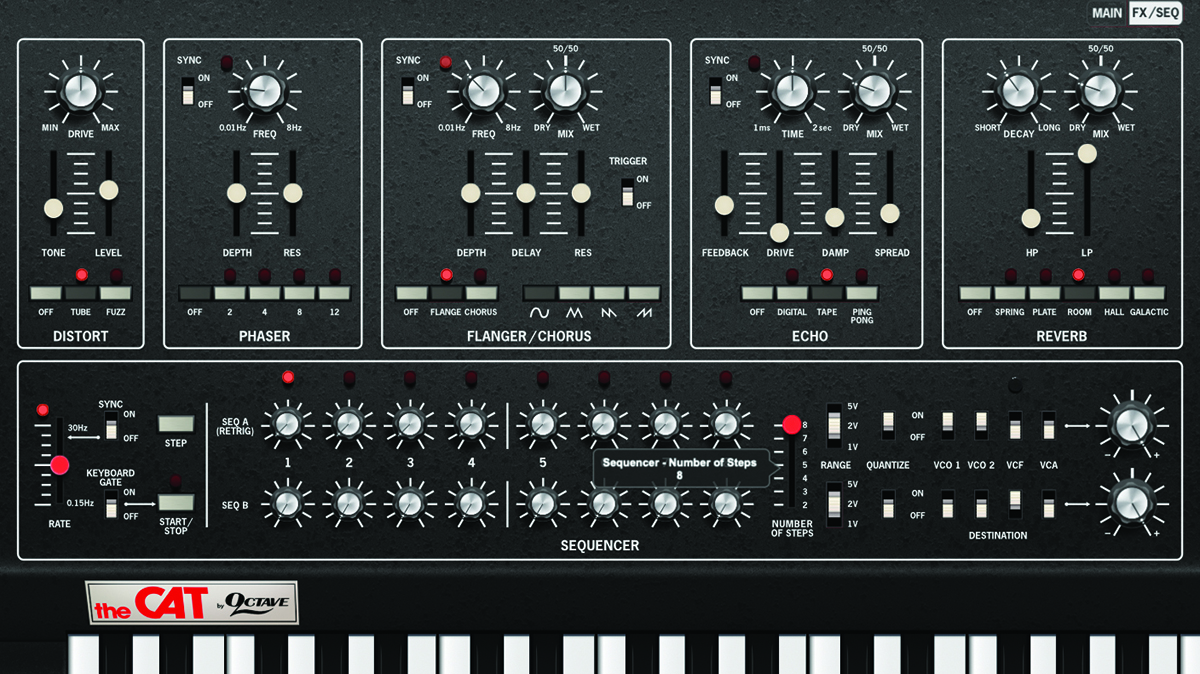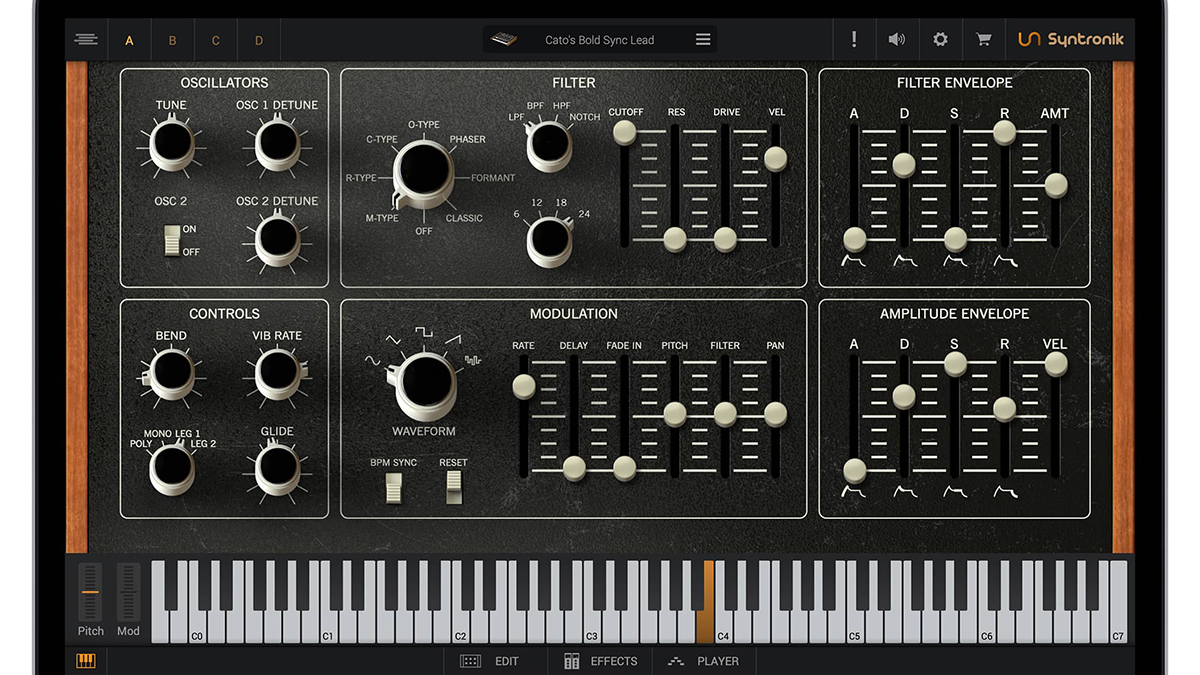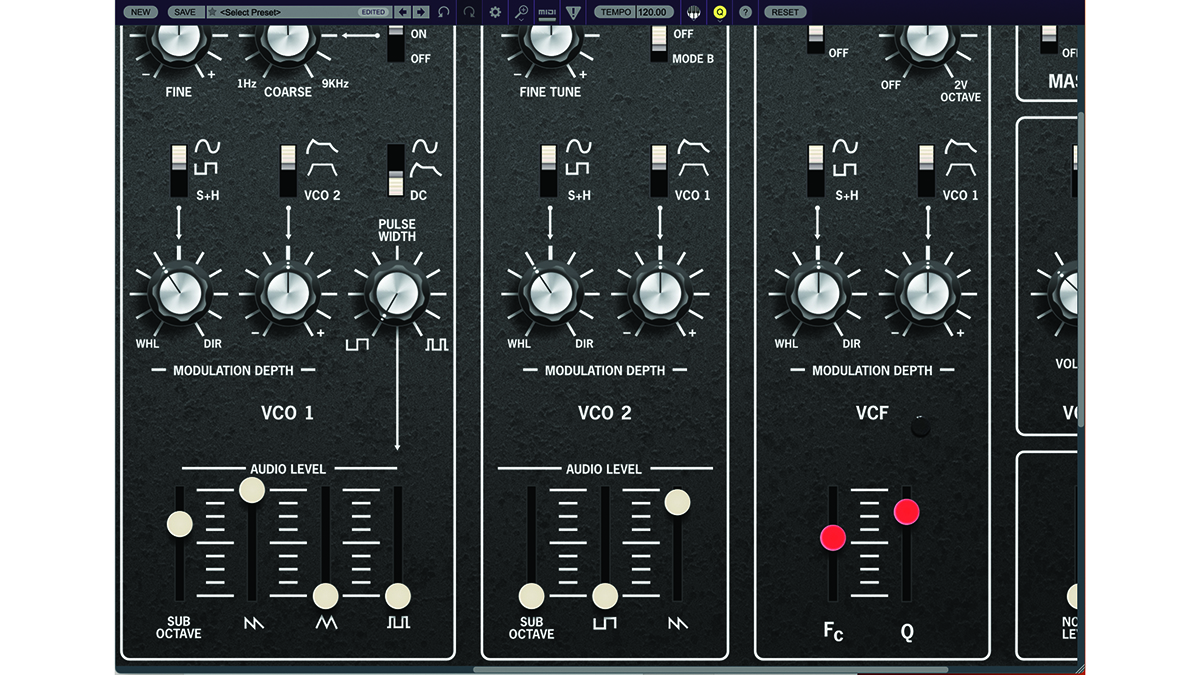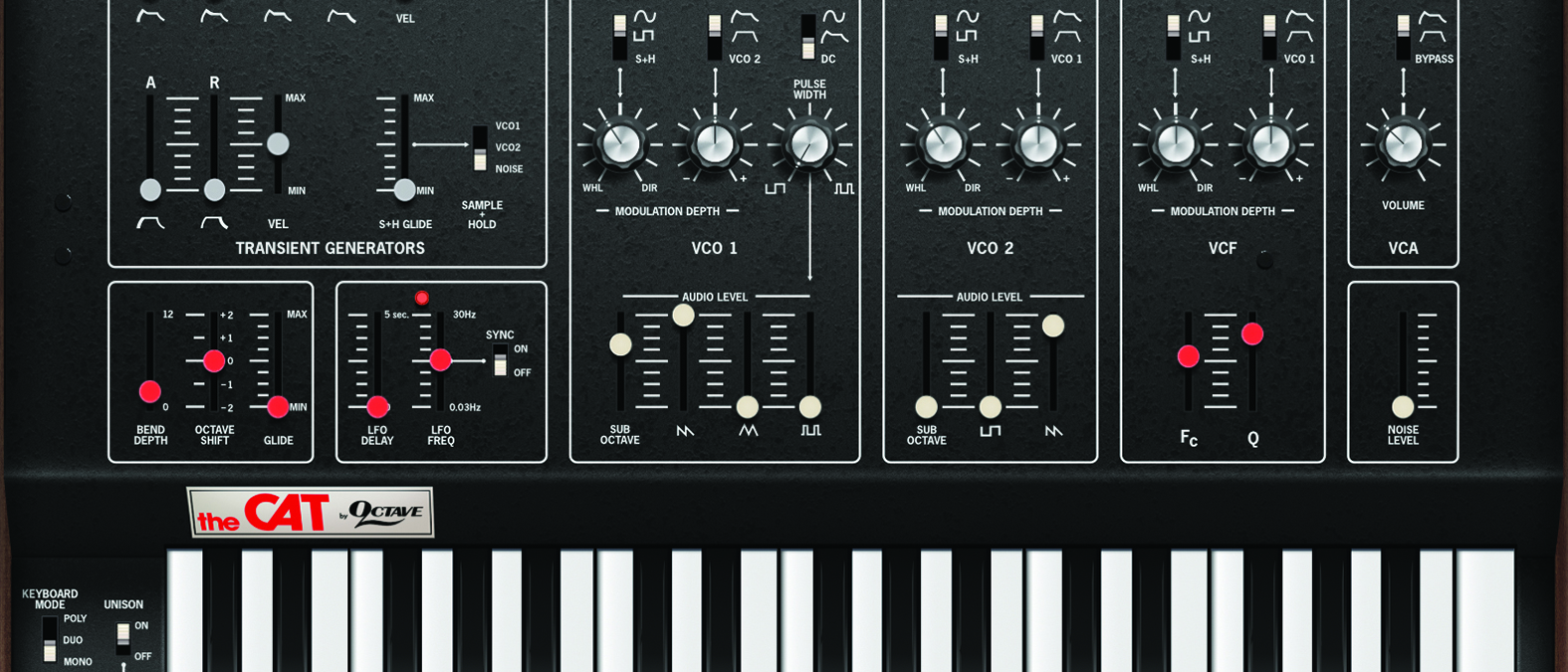MusicRadar Verdict
Another superb emulation from Cherry Audio, capturing the Cat’s essence, plus a ton of scope beyond the original’s remit.
Pros
- +
A truly superb reincarnation of a lesser-known classic.
- +
The GUI is a joy to use.
- +
Unison and Polyphonic functions are fab.
- +
The Sequencer/FX page is cool indeed!
- +
Unbelievably cost effective.
Cons
- -
Scratching our heads here!
MusicRadar's got your back
Cherry Audio Octave Cat: What is it?
macOS: 10.13 or above. macOS 13 Ventura supported. 64-bit required. Native Apple M1 or greater processor support, including Ultra. 3.4GHz Quad-Core or M1 CPU with 8GB of RAM recommended.
Windows: 7 or above (including Windows 11), 64-bit required. Quad-core computer with 8GB of RAM recommended.
Hard disk space: 21MB.
Buy at Plugin Boutique
Octave Electronics would perhaps not be the first company that might trip off the tongue when considering the early synth classics of the ’70s. Borne out of a desire to offer synthesisers to the masses, at a price point that individuals could afford, the Cat was its flagship monophonic machine.
In many respects, Cherry Audio is continuing this tradition, offering a considerable lineup of classics, both recognisable and lesser known, in a desirable format that won’t break the bank. We’ve been blown away by their recent offerings, but what does this particular Cat bring to the basket?

Cherry Audio Octave Cat: Performance and verdict
The original Cat was a duophonic machine; equipped with two oscillators, its mono operation could be split, assigning each VCO to a voice, while continuing to adopt single envelope and amplifier operation. This shares duophonic kinship with the ARP Odyssey, which provided similar functionality. Being as it is a software clone, Cherry Audio has extended this operation, while maintaining the behavioural elements that would have been provided by the limitations of duophony.

• Syntronik Instruments CATO
Uses sampled content, for an exceptional facsimile with the spirit of the original.
• Sonic Couture The Attic 2
Features 18 similar curios from the vintage age of synths. Full of character and charm.
In monophonic mode, the Cat exhibits resounding character. The emulation of the 4-pole/24dB filter is exemplary. It provides a degree of reminiscent wispiness, but make no bones about it, the Octave Cat punches considerably in the bottom end (although there is the recognisable drop in lower frequency content once resonance is increased to its upper echelons). The resonance was always a particularly distinctive feature of the Cat, which has been superbly resurrected in detail, along with all other elements, right down to the envelope behaviour.
Cherry Audio has added a wealth of features to the Cat’s functionality, beginning with a vast extension of its monophonic credentials. Apart from its previously mentioned duophonic behaviour, it’s possible to extend the number of voices in steps, up to a full complement of 16, turning the Cat into a characterful polysynth. However, it is also possible to remain in mono mode and utilise Unison. As the increasing voice count relates to voices rather than VCOs, the output can become wonderfully raucous, pretty quickly. When you factor in the ability to blend waveforms within the VCO section, including a sub oscillator at each VCO level, that’s a ton of wave content to be compiled, so the logical Unison Detune fader allows you to dial in the amount of Super-wave detuning you would like. It’s less Cat and more Euro at this level, but it’s a very welcome feature.
The VCO and VCF sections also provide a large degree of modulation possibilities, drawn from many of the usual suspects; syncable LFO with sample & hold, two envelope generators (ADSR & AR) and syncable oscillators.

All mod(ulation) cons
Modulation is the key to creating interesting synth patches that exhibit character and develop over time. The Octave Cat placed a considerable number of modulation options right at the heart of its oscillator and filter sections. As a consequence, things can get chaotic very quickly, particularly if using the LFO or sample & hold features.
Want all the hottest music and gear news, reviews, deals, features and more, direct to your inbox? Sign up here.
Provided as part of the added extras list, the 8-step sequencer is a hugely usable feature. Equipped with two rows of virtual CV pots, you can direct a modulating influence to either (or both) of the VCO sections, the filter cutoff or the amplifier. This immediately creates huge potential for synth-pop or electronic-style percussive loops, which can also be latched on the keyboard. It additionally means that you can program pure basslines, with the ability to re-trigger or remain passive on each step, while the pot-quantise function will easily switch to a chromatic step format, for ease of note programming.
Top cat
Moving away from the original, there is a very welcome FX and Sequencer page, which provides some excellent capacity for extending patch creation. The Distortion effect does help to re-engage the bottom end, if you drive the filter resonance, but its character is also flexible for screaming lead patches, without resonant extension. There are also phaser, flanger/chorus, echo and reverb effects, all of which go way beyond the norms of quality that you might expect within a synth plugin.
True to the character and concept of the original, while extending its operational quota
Meanwhile, an 8-step, analogue-style sequencer can be routed toward oscillators, filter or VCA. We had an incredible amount of fun with this feature, yielding some excellent results when placed within a DAW’s workflow.
Cherry Audio’s take on the Cat is stylish; it’s true to the character and concept of the original, while extending its operational quota by some margin, providing an engaging synth which is simple on some levels, but has capacity to go further when desired. The Octave Cat is the most tip-top!
MusicRadar verdict: Another superb emulation from Cherry Audio, capturing the Cat’s essence, plus a ton of scope beyond the original’s remit.
Cherry Audio Octave Cat: The web says
"For the very sensible price of admission, Octave CAT gives you access to a world of creative sound shaping and even just working your way through the presets you’re bound to find something that inspires you."
MusicTech
Cherry Audio Octave Cat: Hands-on demos
Cherry Audio
Starsky Carr
Simeon Amburgey
Alex Reid
Cherry Audio Octave Cat: Specifications
- macOS 10.13 or above. macOS 13 Ventura supported. 64-bit required. Native Apple M1 or greater processor support, including Ultra. 3.4GHz Quad-Core or M1 CPU with 8GB of RAM recommended.
- Windows 7 or above (including Windows 11), 64-bit required. Quad-core computer with 8GB of RAM recommended.
- Hard disk space: 21MB.
- Buy at Plugin Boutique
Computer Music magazine is the world’s best selling publication dedicated solely to making great music with your Mac or PC computer. Each issue it brings its lucky readers the best in cutting-edge tutorials, need-to-know, expert software reviews and even all the tools you actually need to make great music today, courtesy of our legendary CM Plugin Suite.

